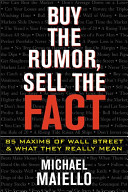Here comes the story of Procter & Gamble and its moon-and-star logo.
The moon-and-star logo had been printed on P&G’s products for more than 140 years. It served as a reflection of P&G’s unique ability to satisfy and delight their consumers.
(http://www.businessinsider.com/pg-puts-moon-in-new-logo-despite-satanist-accusations-2013-5)
However, it was just the consumers who boycotted this logo and finally resulted in its removal and disuse in 1991. All came from a sparking rumour spreading almost through 1980s.
Rumour had it that this logo represented satanic symbol (see Wikipedia: P&G, logo controversy) and that P&G was Moonies-controlled (Kimmel, 2013). Such a rumour triggered a national crisis and finally P&G re-designed their logo in 1991 to cease the tidal wave of public criticism.
Several big brands has struggled in rumour-caused crisis situation as P&G: McDonald was said to manufacture hamburgers with worm meat in America, and Coca cola was believed to be more cancer-causing in China. In each of these cases, rumours had a devastating negative impact on these brands’ image and their relationship with customers.
Interestingly although these brands did utmost to root out the undesirable hearsays transmitting in their consumer communities, none of the rumours ever died a natural death. In P&G case, the satanic logo rumour made several comebacks in 1980s, in each time of which consumers just believed in the rumour.
So why people blindly took in such rumours?
There are three main reasons for people believe in and transmit a rumour: release the anxiety and make sense of the uncertain situation, enhance self-worth and maintain social relationships (DiFonzo & Bordia, 2007).
Before the satanic logo rumour spreading, Moonies (Unificationism) was just on their way to rise. People in some religion community got the anxiety on the question of whether it would cause damage to their religion peace. Hence when initially occurring in small communities, the rumour that a super-big brand as P&G was involved in evil activities seemed to make sense for these people.
On the other hand, social motivation also plays a role in people’s desire to spreading the rumour. Imagine a chat your friend tells a shocking so-called non-public story in details. Would not he immediately become the focus in a casual chat? When linked into celebrities and grand brands (especially daily-seen brands as P&G), rumours are just juicier for a bull session.
Rumours stem from some basic human motivations for social interaction and they may even be ineradicable. Therefore, how can the companies and brands deal with them?
Here are three tips for the battle with commercial rumours:
Tip 1: Build the reputation firewall before an ignited rumour.
If a rumour is consistent with consumers’ existing attitudes, they will be much likely to believe in it (Litman & Pezzo, 2000). Hence the pre-rumour attitudes from consumers may be vital for the brands. Before P&G logo rumour spreading, the fast-expending P&G business had already invited criticism. The stereotype of evil big business shadowed on the consumers’ feeling when they heard the rumour.
Tip 2: Release the favourable information by credibility source.
It has been proven in scientific research that when credible and authoritative professionals or organization release some information, people will have a stronger belief in it (Petty & Cacciopo, 1981). So in a clarification to settle a rumour out, it is always better to secure the reliability by the help of professionals with public credibility.
Tip 3: Cut off the repeatedly hearing for the consumers.
There is an old saying as that a lie said one thousand times become truth. In the perspective of psychology, it’s called illusory truth effect: when people hearing something repeatedly, chances are that they will believe that’s true (Mitchell, Dodson & Schacter, 2005). Therefore never leave the negative hearsay repeating itself.
After all, battling with rumour may be struggling hard and sometimes unavoidable. That is why rumour management expert is needed for the future marketing industry and also why I am working on it.
Reference
DiFonzo, N., & Bordia, P. (2007). Rumor psychology: Social and organizational approaches. American Psychological Association.
Kimmel, A. J. (2013). Rumors and rumor control: A manager’s guide to understanding and combatting rumors. Routledge.
Litman, J. A., & Pezzo, M. V. (2005). Individual differences in attitudes towards gossip. Personality and Individual Differences, 38(4), 963-980.
Mitchell, J. P., Dodson, C. S., & Schacter, D. L. (2005). fMRI evidence for the role of recollection in suppressing misattribution errors: The illusory truth effect. Journal of Cognitive Neuroscience, 17(5), 800-810.
Petty, R. E., & Cacioppo, J. T. (1981). Issue involvement as a moderator of the effects on attitude of advertising content and context. Advances in consumer research, 8(1), 20-24.
picture resource:
Wikipedia: P&G, logo controversy
(http://www.businessinsider.com/pg-puts-moon-in-new-logo-despite-satanist-accusations-2013-5)
Cartoon from Alex Norris





Hi,
I find your topic really interesting. People could be very very stupid, don’t you think…
I find an interesting article related with this topic.
The authors of the paper, titled: “Consumer Responses to Rumors: Good News, Bad News” (http://www.sciencedirect.com/science/article/pii/S1057740897703887#), find out that even if consumers are aware about the stigma associated with rumors, they actually believe and spread this kind of information, especially in particular ambiguous situations. Moreover, the consumers are much more likely to perceive rumors as a poor source of information. They evaluate much more positive attitudes, in term of credibility, sources as advertising or published fount.
The article also point out that, if the consumers have a higher interpersonal or intrapersonal interest towards the topic, they will be much more inclined to transmit rumors.
So, in conclusion, we like rumors, especially if they have hight involvement in our personal interest.
The companies has to be aware of this kind of power.
Although, they have some strategies to face this problem.
As I read in the Forbes website: http://www.forbes.com/sites/onmarketing/2011/09/16/how-to-stop-rumors-before-they-ruin-your-brand/ ,Dubois and Rucker, state that there are three main strategies:
1- Deinal: the Brand Company disconfirm the rumor.
2- Re-association: combine the rumor with something positive in consumers’ mind.
3- Ask consumer if they are confident or not with the rumors, nudging them to prove themselves if the rumor is true or not.
Hi,
I find your topic really interesting. People could be very very stupid, don’t you think…
I find an interesting article related with this topic.
The authors of the paper, titled: “Consumer Responses to Rumors: Good News, Bad News” (http://www.sciencedirect.com/science/article/pii/S1057740897703887#), find out that even if consumers are aware about the stigma associated with rumors, they actually believe and spread this kind of information, especially in particular ambiguous situations. Moreover, the consumers are much more likely to perceive rumors as a poor source of information. They evaluate much more positive attitudes, in term of credibility, sources as advertising or published fount.
The article also point out that, if the consumers have a higher interpersonal or intrapersonal interest towards the topic, they will be much more inclined to transmit rumors.
So, in conclusion, we like rumors, especially if they have hight involvement in our personal interest.
The companies has to be aware of this kind of power.
Although, they have some strategies to face this problem.
As I read in the Forbes website: http://www.forbes.com/sites/onmarketing/2011/09/16/how-to-stop-rumors-before-they-ruin-your-brand/ ,Dubois and Rucker, state that there are three main strategies:
1- Deinal: the Brand Company disconfirm the rumor.
2- Re-association: combine the rumor with something positive in consumers’ mind.
3- Ask consumer if they are confident or not with the rumors, nudging them to prove themselves if the rumor is true or not.
Such fun! Well done, I love your blog very much, especially this week’s blog title, it’s really attraction.
Marketers want their brands to resonate with consumers, and often companies want to grow without limitation. However, many brands fail to live up to such aspirations because they fail to establish strong consumer connections. Brands often focus too much on a brand USP (unique selling proposition), on segmentation targeting, and a brand-centric approach – a focus on what the brand wants to say about itself.
Great blog, rumours can definitely have a very negative effect on brands. In addition to the reasons you point out I believe that rumours tend to gather strength and gain increased credence because generally these rumours get passed on to individuals from their close friends and family members, these are regarded as more trustworthy and reliable meaning what they say has greater influence than the message portayed by the brands who are commonly depicted as cold corporations
Your blog is very true in the fact that rumors are a very powerful tool in any situation not only for brands. I also feel that rumors can have a positive afffect of they are of a positive nature. this would be benefitial for brands and companies. I have just got a contract for the iphone 5c and the only reason i went on o2 was because of the rumors of the great survice i had been hearing for the past few weeks.
COmpanies need to make sure that the rumors that are circulating about them are positive and if there are any negative rumors they need to squash them and set the record straight before any repuatation damage had been caused.
great blog and very intersting
Rumours are without doubt a huge part of business. They can have a huge effect on peoples buying habits and deciding what products to choose from. People are likely to favour companies which elicit a positive brand identity rather than one which is surrounded by rumours. The technique that i feel is best when it comes to dealing with rumours would be to embrace them and make fun of them almost. Don’t come across as aggressive or defiant because people aren’t as favoured to that. The best way is to embrace the idea and take the Mick out of the rumour showing you take it in good humour but at the same time denying that it exists. This can be referred to as turning into the skid.
It may not be a business related example but one that can be related and shown as turning into the skid is James Franco. James Franco is a huge Hollywood actor, which for a lot of his career has been portrayed as arrogant and unlike able. He has had a bad opinion of him for the things he has done, and people have believed rumours spread about him because of this. Recently he was on tv with a programme called the roast of James Franco. The programme involved him invited many of his peers and fellow Hollywood actors to stand up and almost take the mick out of James Franco’s career whilst the actor sat there and listened. By going along with the ‘abuse’ he received he comes across in a more favourable light and has almost definitely changed a lot of peoples opinions regarding the star.
This is a clever example of using the rumour and turning it around to make yourself come across in a better light. Instead of straight of denying it, he has shown that these rumours don’t apply and as the audience we almost forget about these rumours because of it. This can be applied in the business sector as well.
In terms of a massive conglomerate this can serve to eliminate a sense of bureaucracy which you have spoke about, giving a more personable sensibility to a company.
Interesting blog, it’s true that reputation can be vital to business and a bad service or reputation can lead dissatisfied customers to turn to alternate suppliers. 82% of consumers have stopped shopping at a store due to a negative experience according to a Tarp study. This same study (conducted in 1997) also found people will pass positivity reflected around a company or brand to 8 of their friends whereas a bad experience can be passed on to 16 of them. So it’s true that hearsay can have a genuine negative influence on a company’s revenue, even leading them to shut down business completely as people see it as a health risk, or it will maybe be a discredit to them if they shop there! (Tarp, 1997)